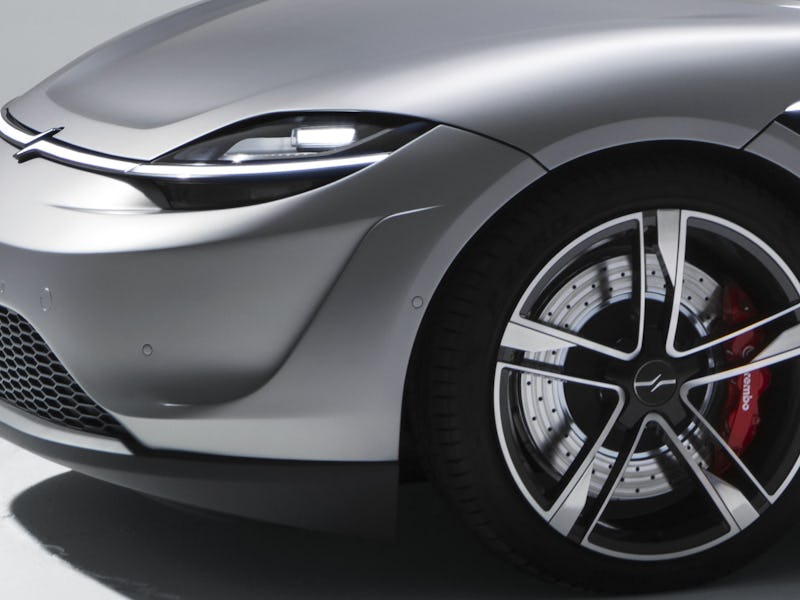Sony's next tech project is electric cars, and the first look is stunning
The company's foray into the four-wheeled future shows the car isn't just for automakers now.

Sony is getting into cars. On Monday, the Japanese tech giant unexpectedly announced the Vision-S initiative, which has produced a sleek, silver concept sedan packed with features that transform the car into more of a giant computer on wheels.
“We will accelerate our efforts to contribute to the future of mobility under a new initiative named Vision-S,” Sony CEO Kenichiro Yoshida said on stage at the Consumer Electronics Show in Las Vegas.
The concept car packs 33 sensors inside and out. This covers CMOS imaging sensors like those used in cameras, as well as time-of-flight sensors that can measure object distance. While time-of-flight sensors are rumored to debut on Apple’s future iPhone, Sony is using them to detect objects and people both inside and out.
The Sony Vision-S.
The computer on wheels is emblematic of a broader shift in the automotive world, where electric cars are fine-tuned through software updates and autonomous vehicles depend on data and sensors to deliver a smooth experience. Ford may have made its name in Detroit in the early 20th century, but Tesla established itself in the early 21st century in the tech-centric world of Silicon Valley — in part thanks to Panasonic, another tech firm that provides the giant batteries necessary to drive its vehicles.
The lines are blurring faster between the tech and car industries. Apple is testing autonomous cars through “Project Titan,” Google’s self-driving project is now hosting taxi services, and Tesla is already talking up its future platform that will offer an Uber-like service through its vehicles. Cars have become an increasing feature at CES every year. California’s list of firms approved to test autonomous cars features an eclectic mix of traditional firms like Volkswagen, BMW and Ford alongside techy names like Samsung, Qualcomm and Nvidia.
This merging is set to grow over the coming years. A 2018 Automotive World report, titled “is data the new oil?”, claimed that 88 percent of new cars globally will feature integrated telematics by 2025.
The Sony Vision-S interior.
Sony Vision-S: the future arrives
Sony’s entry into this space demonstrates a number of key talents. Perhaps the most eye-catching is the giant front screen, used to show information like speed while also offering a place to watch films. It draws to mind the M-Byte from Chinese automaker Byton, which features a giant 48-inch screen. Even the Tesla Model 3, a $35,000 car with a central touchscreen, ditches the traditional instrument cluster and dials for a minimalist experience.
The car also packs what’s called “360 Reality Audio.” In layman’s terms, this builds speakers into each seat to make the content more immersive for the passengers.
Sony also promises that the vehicle will be integrated with the cloud, continually updating its capabilities. Tesla is using a similar approach to gradually build out its autonomous driving capabilities, employing the same sensors and hardware while updating the A.I. to take over more of the driving.
As for the vehicle itself, it’s unclear whether Sony will ever ship the car as a fully-fledged vehicle. The company has clearly taken care with the design, even teasing a wrap-around seam on the front that lights up, complete with minimalist logo on the front. The prototype is built on a newly-designed electric vehicle platform. Yoshida suggested that the platform could support other vehicle types, including sport utility vehicles.
Will Sony join the likes of Ford and Volkswagen in the automotive space? Its expertise in displays and sensors is clearly on display in its first outing, and the lines between car and gadget are only likely to blur further in the future.